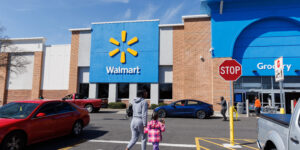ACE Limited Chief Executive Officer Evan Greenberg said the influx of Wall Street capital into the reinsurance industry is pressuring rates and that he is prepared to cut sales of backstop coverage.
Prices for catastrophe reinsurance have declined about 5 percent internationally and as much as 15 percent in the U.S., Greenberg said today during a conference call to discuss second- quarter results at the Zurich-based company.
“You see alternate capital coming in, capital markets in addition to traditional players,” said Greenberg, 58. “So you’ve got that pond, with more drinking out of it.”
Pension funds and other institutional investors have been pouring money into reinsurance to boost yields on portfolios as central banks hold interest rates low to stimulate the economy. The use of catastrophe bonds has also increased as more fixed- income investors accept the risk of natural disasters wiping out their principal in exchange for above-market yields.
Ace’s net policy sales of reinsurance fell 5.5 percent to $292 million in the quarter from $309 million a year earlier, the company said yesterday in a statement.
“If we like the trade we’ll write it,” Greenberg said of his company’s reinsurance strategy. “If not, you’ve seen what our track record is. We will shrink businesses and have no problem doing it.”
Ace slipped 1.5 percent to $91.88 at 4:15 p.m. in New York. Greenberg’s firm has advanced 15 percent this year, compared with the 16 percent gain in the 78-company Bloomberg World Insurance Index.
Greenberg’s Guideposts
“The competition is continuing to increase in the reinsurance space,” Charles Sebaski, an analyst at BMO Capital Markets who has an outperform rating on Ace, said an interview today. Greenberg and his team may face pressure generating premium revenue “if the economics of the business do not meet their guideposts.”
The firm’s biggest segments, North American property/casualty and overseas general insurance, both reported increases in policy sales. Greenberg said Ace can be selective because it sells so many types of insurance, including crop protection and accident-and-health coverage, and has an advantage over competitors that specialize in reinsurance.
Feeling Compelled
“There is plenty of capital in reinsurance because the results have been good, so their balance sheets have grown and reinsurers are hungry,” Greenberg said. “Many will profess undivided discipline, but they chase market share. For many of them, their standards are not the same as ours. And for many it’s all they do for a living so they feel compelled.”
Greenberg joins Franklin “Tad” Montross, CEO of the General Re unit at Warren Buffett’s Berkshire Hathaway Inc., in highlighting the potential risks tied to new money in reinsurance.
Montross said last month that demand for catastrophe bonds makes sense because investors want yield. Sales of dollar- denominated cat bonds have climbed to $4.97 billion this year from $3.98 billion in the same period in 2012. Still, cat bond investors may be more fickle than reinsurers, he said.
“What happens after the $150 billion earthquake, when Nevada is basically coastline to the Pacific?” Montross asked the audience at a June 6 conference hosted by Standard & Poor’s.
Swiss Re Ltd., the world’s second-largest reinsurer, has said that April renewal prices were down about 3 percent.
“Without further significant catastrophe losses in the remainder of 2013, we expect that this downward pricing trend will likely continue through the remainder of the year,” David Flandro, global head of business intelligence at Marsh & McLennan Cos.’ Guy Carpenter reinsurance broker, said in a July 9 statement.
With assistance from Noah Buhayar and Charles Mead in New York. Editors: Dan Kraut, Steven Crabill





















 When the Boss Doesn’t Want to Hear About Your Stress
When the Boss Doesn’t Want to Hear About Your Stress  A New Claims Playbook: United and Street Smart on Litigation Demands
A New Claims Playbook: United and Street Smart on Litigation Demands  Viral Work Trends Insurers Will See More in 2025
Viral Work Trends Insurers Will See More in 2025  Blacks and Hispanics Pay More for Auto Insurance. Study Tries to Answer Why.
Blacks and Hispanics Pay More for Auto Insurance. Study Tries to Answer Why. 